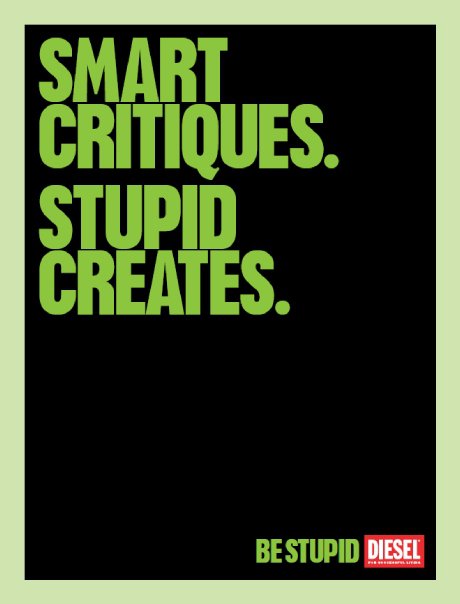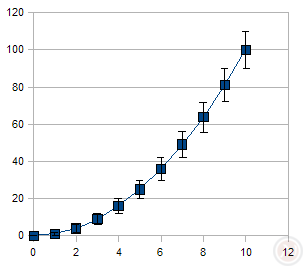I once joked that when my blood pressure is too low I go and buy the Time Magazine. It works better than medication and with less side-effects. Now that I live in Sweden however, the Time Magazine doesn't stare at me on the register in every supermarket. Since Stefan cares about my well-being, he now has a subscription, special offer, EUR 20 for one year. And thus, on our
road trip from Frankfurt back to Stockholm I browsed through one of the recent issues. So I can now offer you a particularly nice example for American
arrogance self-confidence.
In the March 11 issue, Andres Martinez suggests one of "the most important trends of the new decade" in his article
The "important trend" is, in a nutshell, that the world will become a Global America:
"The fact that the rest of the world is becoming more like us — in ways good and bad — underscores the extent to which we are living in an American century, even as it erodes, by definition, the notion of American exceptionalism."
He derives this development towards The Global America from a thought experiment:
"If you bring together teenagers from Nigeria, Sweden, South Korea and Argentina — to pick a random foursome — what binds these kids together in some kind of community is ..."
Let's see, what could it be that binds these teenagers together? They like Pizza? They have skin problems? They think their parents are embarrassing? No, it's actually...
"... American culture: the music, the Hollywood fare, the electronic games, Google, American consumer brands."
Well, to be honest I don't know very much about the Nigerian music scene, but I'm not sure what this is supposed to say except that some countries can't really afford to invest millions in "producing" stars. So let's for a better comparison have a look at
this week's German top 10 single charts. The singer's nationalities are in order from 1 to 10: German, German, Belgian, German, American, British, French, American, Virgin Island (I guess that's still British?), American. 3 out of 10 is not bad, but maybe Martinez should take a trip to Germany or France and turn on a radio to get a realistic perspective on the international music scene.
Sure, I am willing to admit that he is right to a large extend, American music and movies are wide spread. And yes, we all use Google and it's an American company. But that's the past. How is that predictive for what the next century will look like?
Well, Martinez isn't done with his insightful analysis. He further lets the reader know:
"As anyone raised in a different country will tell you, two of the strongest impressions someone has on arriving in the U.S. are 1) what a great country this seems to be, and 2) what a mess it must be, judging by the tenor of news coverage and political discourse."
rotfl, the strongest impression that I had after moving to the USA was 1) what a mess this country is and 2) how ridiculous it is that the news coverage desperately tries to protect the American "exceptionalism." Martinez' article is an excellent example of 2).
As you can guess I know a lot of people who are European (mostly German) who spent a postdoc in the USA. They generally share my impression. Let's face it: American food either sucks or is overpriced. American highways are countrywide in a pity state. Americans seem to have no clue how to do a decent plumbing work or how to achieve a functioning canalization. They will instead always tell you there's something specifically weird with their weather. For example, it might rain. Or the sun might shine. Windows in America either don't open or, if you managed to open them, they won't close. Since the windows and doors don't really close, naturally there always has to be a heating or air conditioning running. And let's not even start with issues like education, poverty or health insurance. I think you get the point. The only thing that's really exceptional about Americans is how they still manage to believe they are exceptional.
But you know what? This lifestyle based on low quality standards and constant maintenance has one big advantage: it increases the GDP that Martinez is so proud about. Yes, that's right, every time you wreck a wheel in a pothole, every time your child gets sick, every time you call the plumber, every time you call customer service, every time something breaks and has to be fixed, every time something can't be fixed and has to be replaced, the GDP goes up.
Luckily, unlike what Martinez writes, Europe is not turning into a second America. We actually have working public transportation over here.
According to the World Economic Forum the most tech-friendly country is Sweden.
Past 2001 the "Top Intelligent Community" has not been in the USA (and in 2001 it was NYC, hardly representative for the nation). If you go to the dentist next time, look at the label of the instruments because chances are the equipment is made in Germany.
In the biggest part of Europe same-sex-partnerships are legal. In Germany, prostitution is legal, so is abortion. How long will it take for Americans to crawl out of the 20th century? And
Shania Twain, who wrote the line that is the title to this blogpost, well, she's Canadian.
Okay. Now that I'm done with Martinez' ridiculous essay let me get this straight. I'm not a nationalist. There are indeed many things about America that I like very much. Ahead of all, there's the entrepreneurial spirit which is taken on in the, infinitely better, article "
In Defense of Failure" by Megan McArdle in the same issue of Time Magazine. If you have a start-up idea, if you want to try something new, if you want to be crazy: America is the place to go, not Europe. There are many things Europe could learn from America, ahead of all maybe how to establish a proper "union," and there are things America could learn from Europe, ahead of all maybe how to build proper highways. The same probably holds for other parts of the world. We can all learn from each other, and this exchange is not a one-way process.
I don't think we'll globally converge on the same values and tastes any time soon, and I don't think this would be desirable either. There are some issues we have to converge on in an increasingly interconnected planet, and we have to work on that. But it is extremely unlikely that the outcome will be The Global America.
"You're Tarzan!
Captain Kirk maybe.
John Wayne.
Whatever!
That don't impress me much!"
 I basically agree with Schwarz and I welcome that he is getting his point across so well. It is perfectly okay if science makes you feel stupid, whether you're a professional scientist or not. Just don't stop there. I however find it somewhat misleading that Schwarz calls it stupidity if one doesn't know an answer since it mixes up knowledge with intelligence. But it makes for a more catchy title.
I basically agree with Schwarz and I welcome that he is getting his point across so well. It is perfectly okay if science makes you feel stupid, whether you're a professional scientist or not. Just don't stop there. I however find it somewhat misleading that Schwarz calls it stupidity if one doesn't know an answer since it mixes up knowledge with intelligence. But it makes for a more catchy title.













